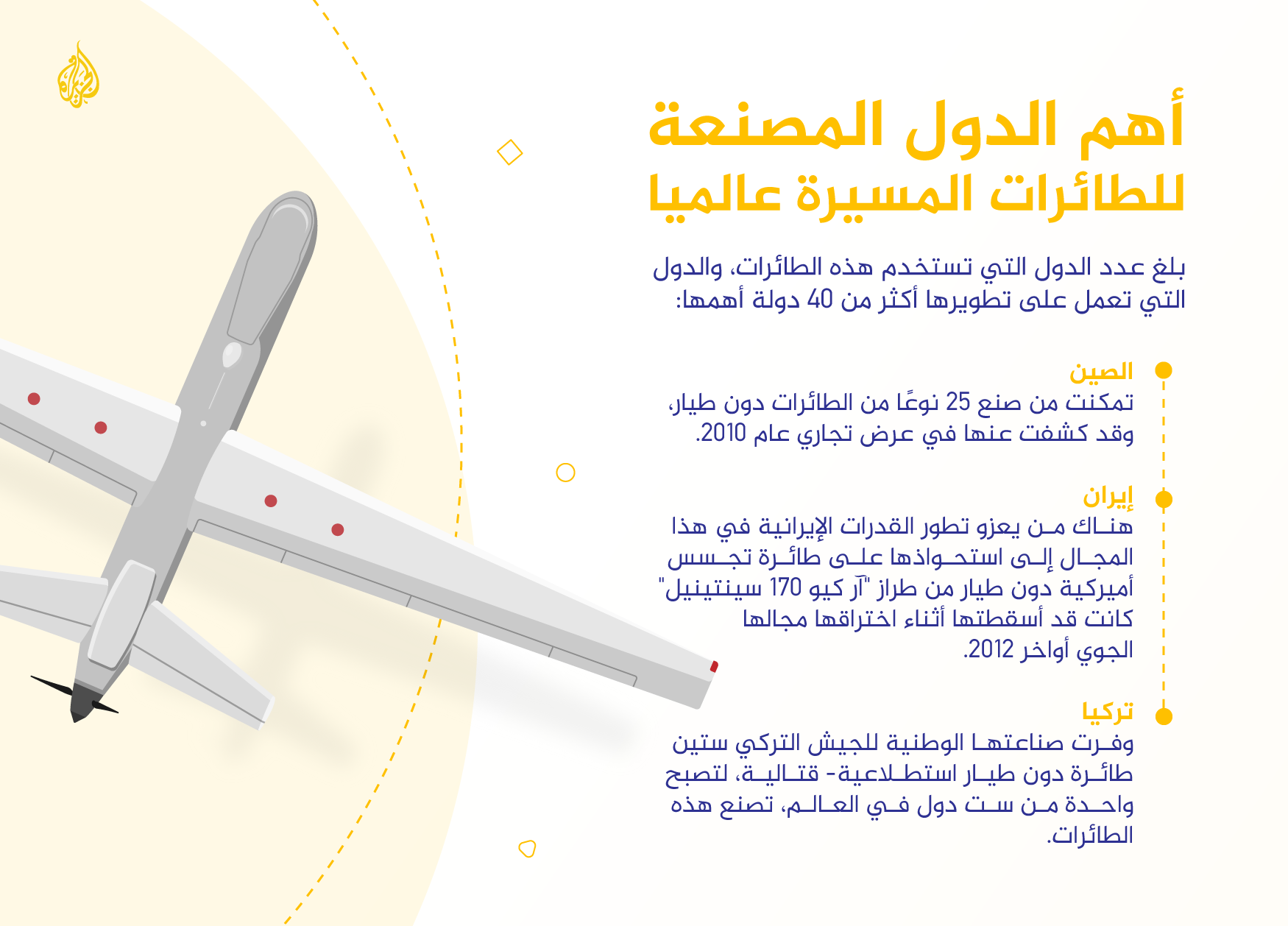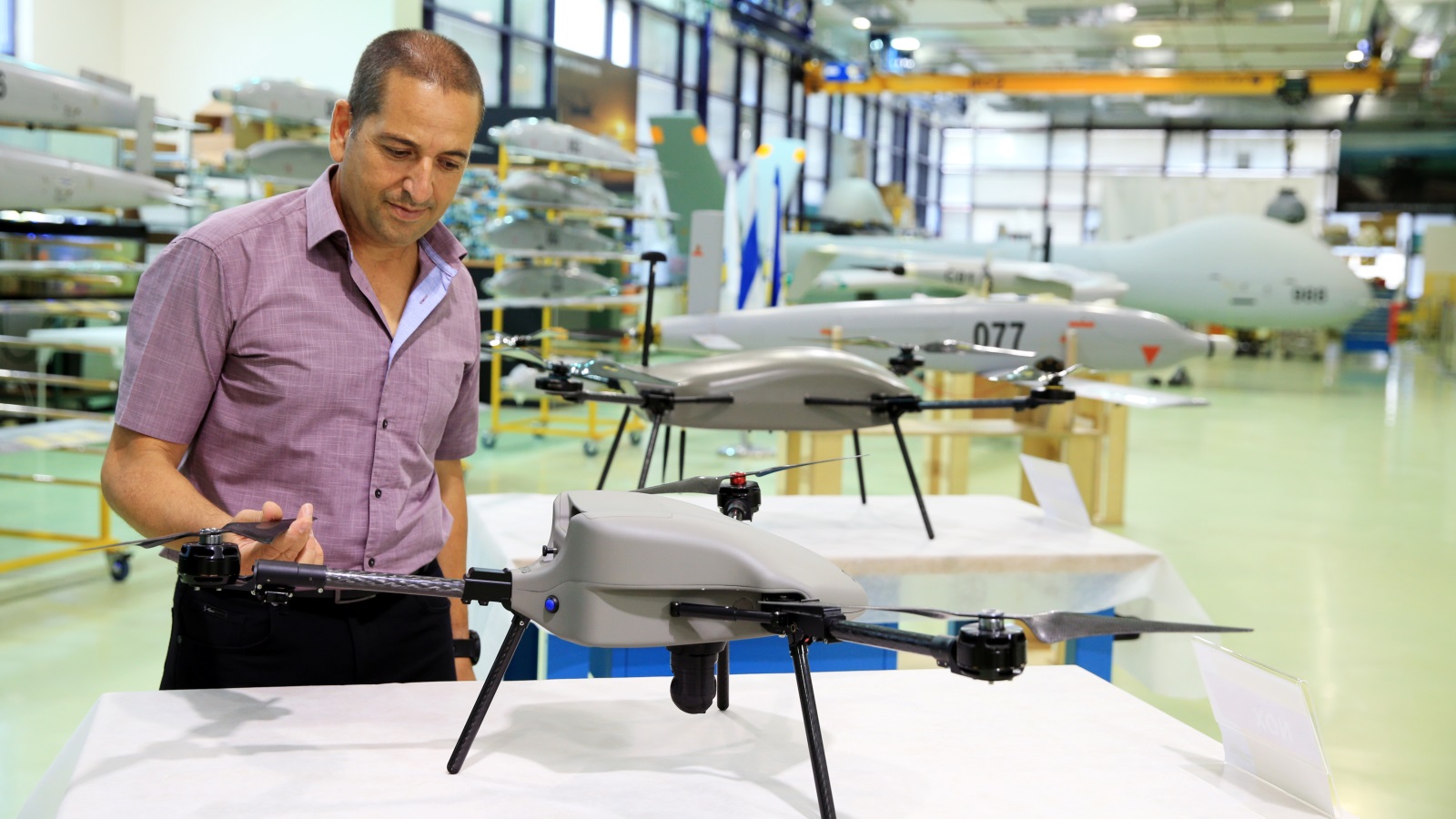Gives a name The drone Or drone, or the English word “drones”, on aircraft that are controlled remotely, and sometimes the control is autonomous.

Operating Systems
- The take-off and landing of some close-range drones are controlled by different controls and via radio waves.
- From which it flies hundreds of kilometers, it is controlled by Satellites Which ensures the continuity of wireless communication with it.
- It usually has its own course points set to self-orient itself by its automated system based on predetermined coordinates.
- The Global Positioning System (GPS) made it easy to determine the starting location and return to it automatically if necessary.
- Sensors equipped with the aircraft, such as ordinary optical cameras, infrared cameras, and radar, detect the challenges it faces, and the automated flight system sends all the information to the ground pilot, and the “collision avoidance system” works to avoid a collision through the pilot’s system. Automated, not ground pilot.
Problems and challenges
Despite the state of development in the field of unmanned aircraft, they still face technical and technical problems that cause many accidents. Reports issued by the Pentagon in 2010 revealed that 38 of them crashed during operations.Afghanistan And Iraq.
The causes of these and similar incidents are attributed to the following:
- Airplanes are subject to downing, human and operational errors, and untraceability.
- Design flaws and processing errors.
- Unreliability of information received from local customers in the targeting areas.
- Bad weather conditions such as clouds and rain.
Advantages
Countering drones – especially small ones – still faces various challenges, including:
- It cannot be detected or seen by the naked eye.
- Air defense radars are designed mainly for large aircraft.
- The high cost required by response systems when used, for example Patriot Systems A missile costs $1 million each, while a drone may be worth about $500.
- The consequences of confronting these aircraft in urban areas, especially if they are equipped with explosives.
 The most important manufacturing countries
The most important manufacturing countries
The number of countries that use these aircraft, and the countries that are working to develop them, has reached more than forty countries, the most prominent of which are in addition to the United States and Israel:
China:
- It was able to manufacture 25 types of drones, some of which it revealed at a trade show in 2010.
- In 2018, it announced the start of manufacturing the CH-7 drone with specifications that make it capable of flying to an altitude of 13,000 meters and a speed of 571 miles per hour, and it can, using a stock of missiles and long-range bombs, deal with land and sea targets.
Iran:
- During the first decade of the 21st century, it announced the production of a drone for reconnaissance purposes.
- In 2013, it announced the development of the largest combat reconnaissance drone, which it called “Fitras”, with a length of 7 meters and a flight range of up to 2,000 km.
- There are those who attribute evolution Iranian capabilities in manufacturing drones To its acquisition of an American RQ-170 Sentinel spy drone that it had shot down while invading its airspace in late 2012.

Türkiye:
- In early 2019, it announced the development of the “Aksungur” drone, formerly known as Phoenix 2, during a launch, flight, and self-landing experiment that lasted more than 4 hours.
- It provided its national industry For the Turkish army Sixty combat reconnaissance drones, becoming one of six countries in the world that manufactures these aircraft.
- It was counted among the exporting countries, after it was announced in February 2019 that Bikar had delivered six Bayraktar TB2 drones to Qatar.
Arab countries:
The drone industry in the Arab countries is still limited, with the exception of the UAE, which has begun doing so since 2008 through the “Yabhun United 40” drones and a number of their counterparts.
Algeria produced the “Amal 1-400” drone in 2013, while Saudi Arabia manufactured the “Luna” drone, which is an imitation of a German aircraft of the same name.
In Egypt, the Arab Organization for Industrialization announced in 2016 the production of a drone that can carry out various roles, such as reconnaissance, identifying targets, and correcting artillery fire.

Its military roles
- The effective and influential combat role of these aircraft emerged in… October War 1973 When the Israeli army used it to shoot down 28 Syrian warplanes.
- This role became clearer in the 1982 Lebanon War, where it was able to neutralize Syrian (surface-to-air) missiles in the Lebanese Bekaa Valley.
- It still plays an important role in Israeli operations inside the territories it administers Palestinian National Authority Since 2008.
- Its role in the 1982 Lebanon War was an incentive for the United States to purchase it, integrate it into its military program, and participate in… Desert Storm 1991.
- Different types of them played a role in the operations carried out by Washington abroad, especially in what was called the “War on Terrorism.”
- exploited Houthi group The advantages these aircraft offer, and they were able to bomb vital areas and installations in Saudi Arabia.
Strategic tasks
- Drone technology has provided solutions to many of the human and material risks and costs related to military operations.
- It provided combat advantages related to easy, abundant and quick access to information using the equipment it carried.
- Their use has created fundamental differences, strategic and tactical, compared to what armies achieve on the ground, in terms of monitoring, tracking and other tasks (there are many examples of what these aircraft achieved in Afghanistan and…Yemen Iraq, Libya, etc.).
- In terms of influencing the size of forces, the use of drones has made significant progress, which was the impetus for the withdrawal of the majority of US ground forces from Iraq in 2011.
Strategic and tactical implications
- Providing live and direct assessment of the results of combat operations, through the succession of information arriving at the center.
- The absence of human losses and the reduction of material losses.
- Reducing the chances of survival for the observed target.
- Saving expenses, operating personnel, effort and time.
- Raise the morale of the beneficiary party, and in contrast to the other party.
